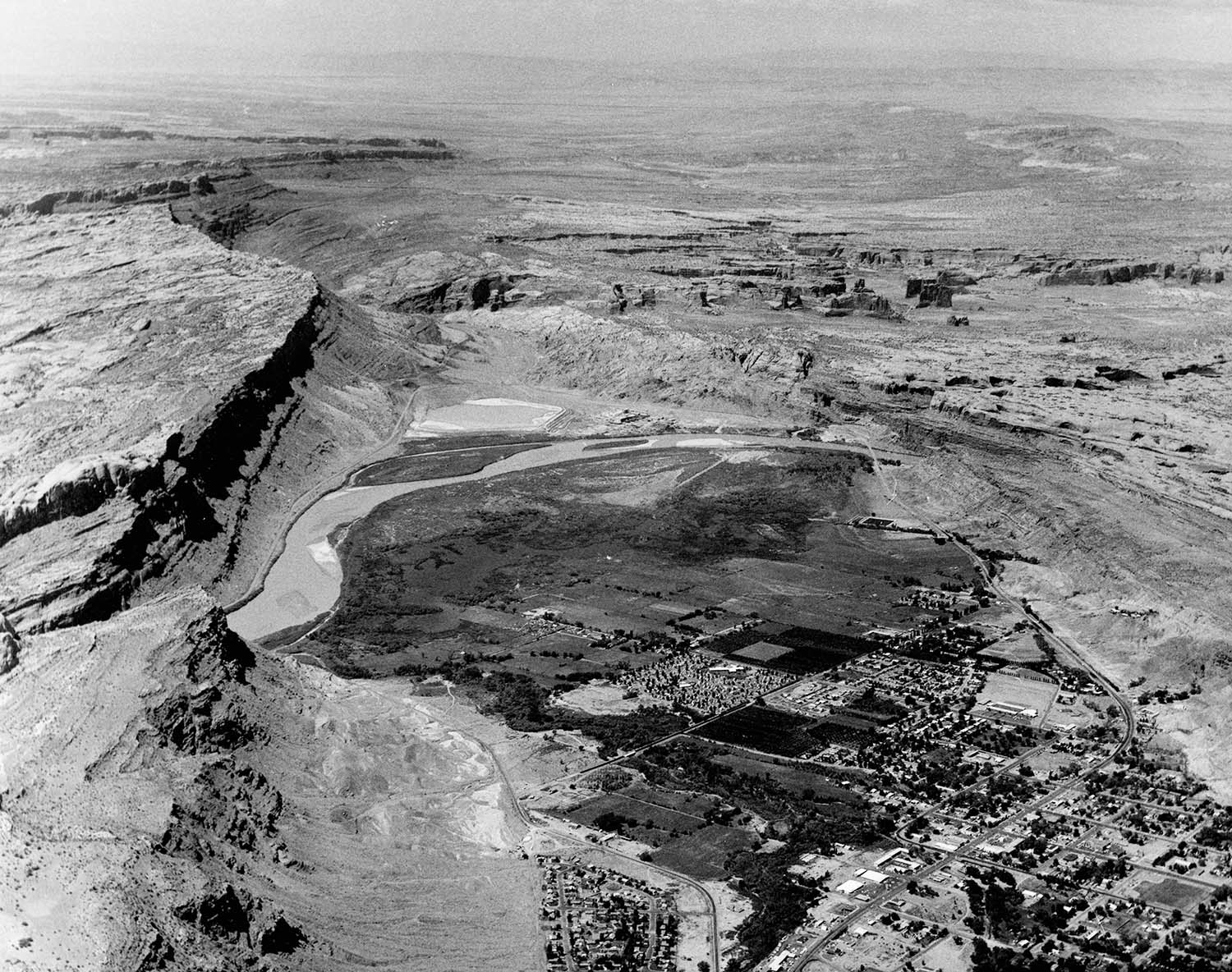Some information may be outdated.
The city of Moab is nestled in a long, low-lying valley that is bordered on one side by a maze of sandstone fins and canyons and on the other by the imposing Moab Rim.
The valley is a striking break in the topography of the region: indeed, its geography is why people have long passed through and settled here. Since the Moab Valley is one of the only easy places to approach and cross the Colorado River in the region, it has long been on travel routes for groups of people native to the Colorado Plateau, as well as Euro-American explorers seeking trade routes through the region. Its proximity to the Colorado River and broad irrigable land made it an appealing spot for settlers of the late 1800s.
But how did this place come to be, geologically? The story of the Moab Valley starts with a common mineral: salt.
Over 300 million years ago, shallow seas left behind deposits of minerals that geologists call evaporites: gypsum, anhydrite, and halite (the same mineral found in kitchen salt shakers). This geologic layer of evaporite minerals, called the Paradox Formation, eventually became buried beneath numerous other layers thanks to the long, slow succession of forming lakes, seas, and dune fields.
Evaporite minerals dissolve easily in water and, under pressure, they can flow like glaciers, slowly shifting underneath thousands of feet of overlying rock. The salt of the Paradox Formation formed a bulge (also known as an anticline) in the area that is now the Moab Valley, creating a dome in the overlying rock layers. Eventually, water helped dissolve the salt within the dome, slowly collapsing the rock above along long fracture zones slicing through the rock layers.
Today, Highway 191 runs along the axis of the Moab Fault near Arches National Park. Overlooking the highway near the entry point to the park, visitors can see the dramatic displacement of rock layers int the fault zone, thanks to interpretive signage.
Several other valleys in the region were created by similar salt tectonic processes, including Castle Valley and the Paradox Valley in Western Colorado. These valley systems remind us how profoundly geology can impact the human experience: a humble layer of salt has defined where towns are located throughout the region to this day.
The Moab Museum is dedicated to sharing stories of the natural and human history of the Moab area. To explore more of Moab’s stories and artifacts, find out about upcoming programs, and become a Member, visit www.moabmuseum.org.
Appreciate the coverage? Help keep local news alive.
Chip in to support the Moab Sun News.





